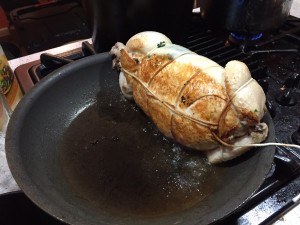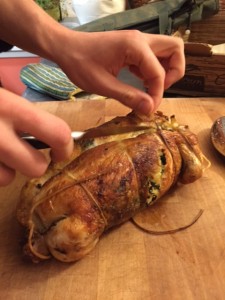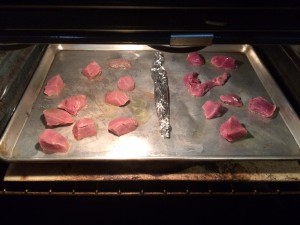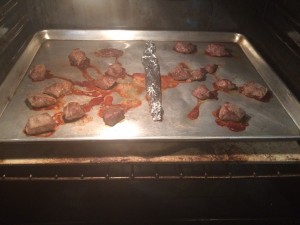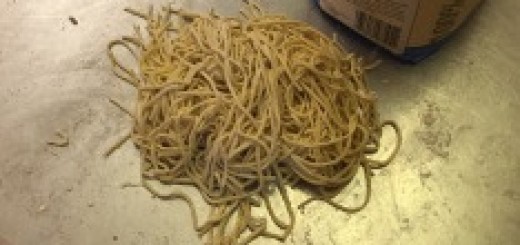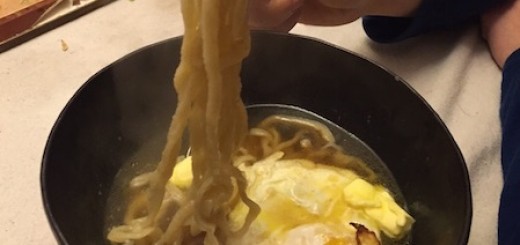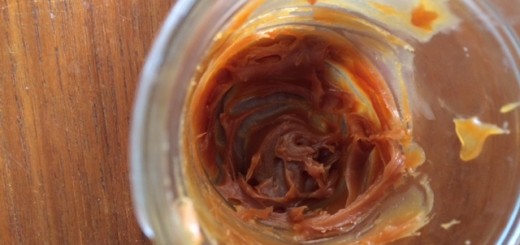The Maillard Reaction (Browning Foods)
Introduction to the Maillard Reaction
The Maillard reaction is the wonderful and complicated thing that happens when we heat foods that contain protein and some sugars. Under heat , the sugars react with amino acids -which are the building blocks of proteins-, and create a huge variety of new molecules. Food scientist Martin Lersch notes that the name is a not entirely accurate since the Maillard “reaction” is actually referring to “a surprisingly large number of reactions”, all starting from the heating of sugar with amino acids but creating all these myriad new molecules (Lersch, Martin. 2012). These molecules include lots of small volatile molecules we can detect with our noses, some molecules that can taste bitter, and larger molecules that lend brown color to the food. Simply put, Maillard reaction is what happens when we brown butter, cook butterscotch or dulce de leche, bake bread, roast coffee, grill meat, or do any number of delightful cooking processes.
Browning and then roasting a chicken ballotine
(photos by Daniel Saunders)
The Science of the Maillard Reaction
The more complicated definition of Maillard reaction goes like this: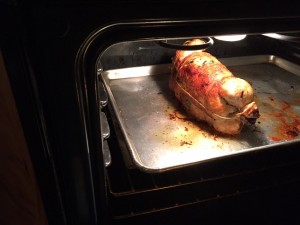
The Maillard reaction (MR) is a heat-induced browning reaction. It occurs between carbonyl groups of reducing sugars and amino groups of free or protein-bound amino acids. The MR is a series of sequential and parallel reactions. The first set of reactions leads to the formation of early glycation products called Amadori or Heyns rearrangement products. The ensuing reactions of these compounds generate advanced MR products (MRPs) among which are Nε-carboxymethyllysine (CML) and 5-hydroxymethylfurfural (HMF). At its final stages, the MR generates brown macromolecules known as melanoidins. (Helou et. al., 2016)
The above definition, can be intimidating at first. However, unpacking it gives some useful information helping us towards a deeper understanding of the MR. So let’s break it down and look at what this definition is saying. First heat-induced browning reaction: that’s straightforward, high temperatures that turn your food brown -got it!
Second, ‘carbonyl groups of reducing sugars and amino groups…’ this is trickier. These “reducing sugars” are sugar molecules that have a carbonyl group (a carbon and an oxygen double bonded). Not all sugars have this carbonyl group (see our post discussing sugars). They are called reducing sugars because they can play the reducing role in an oxidation reduction reaction, ‘giving’ their electrons away. Whats important is that these Carbonyl groups of reducing sugars allow them to interact with amino acids. Now the amino acids: These are a group of organic molecules that link together to make proteins. They can also exist as free (unlinked) amino acids and both forms are common in foods. Essentially we’re restating in slightly more detail what we’ve already learned: The Maillard Reaction= sugars interacting with amino acids under heat creating new things.
The next part of this definition of Maillard, as a “series of sequential and parallel reactions” is again restating in more detail what we heard from Lesch, that the Maillard reaction is not just one reaction but many. All these reaction both build on each other and happen in parallel. In other words reaction A might lead to reaction B while reactions C, D, and E are all happening independently of reactions A and B. Notice that before naming some of the molecules that form from this reaction, the authors note that these are “among” the “products”. In other words, there are not just a few products but multiple classes of compounds coming out of this reaction. It’s very complex, and very diverse in its result. There are many different sugars in food and and many amino acids. If each create slightly different products when they react and all those products go on to make even more we end up with an impressively complex array of Maillard Reaction Products (MRPs). A very cool investigation into the diverse range of MRPs (by Golon and Kuhnert, 2014) found that heating different amino acids with sucrose created different MRPs. Some amino acids created less than a hundred MRPs, and some many more. They found that the amino acid cysteine reacted with sucrose to create up to 8,500 molecules of distinct molecular weights (suggesting they are distinct molecules).
Finally the above definition mentions these “brown macromolecules” called melanoidins. These melanoidins are not not fully characterized though there is lots of research interested in their potential health benefits. From a cook’s perspective these molecules give an appetizing brown color to cooked foods and while they are not molecules we actually smell or taste directly, they may help to hold onto the small volatile aroma molecules that we do savor (Warwick University 2016)(Golon and Kuhnert, 2014). So, now we have the picture of a very complex host of reactions creating both flavor-rich and brown products. We know the starting conditions are: reducing sugars, amino acids, and heat.
The chemical complexity of the Maillard reaction will ring true to any cook who has noticed that there are in fact many different flavors of browned foods, and that the line between browned and burnt is sometimes blurred or personally determined. As we’ve seen, different starting amino acids will result in a variety of end products. On top of this, there is the question of which flavors are lost or overwhelmed in the browning process. Honey cooked with milk will undergo browning but what subtleties of the honey will be lost?
The truth is, Maillard Reaction and its products are still not fully understood. We know some of the chemical structures of MRPs. We can classify them into groups (Golon 2014) and link them to certain flavor categories as Harold McGee does in his food science masterpiece On Food and Cooking, linking Peptides and amino acids to savory flavor ‘chocolate” and “potato, and Earth” flavors to “Pyrazines”. McGee explains that “Maillard flavors are more complex and meaty than caramelized flavors, because the involvement of amino acids adds nitrogen and sulfur atoms to the mix… and produces new families of molecules and new aromatic dimensions”(McGee 2004 p. 778). What McGee is saying is that cooking with amino acids and sugars together will create more complex and interesting browned flavors than browning sugar alone. As McGee says, the chemists reasoning behind this is simply that the greater variety of atoms brought in by the amino acids allows for the more complex end products.
In many ways the understanding of the Maillard reaction in the head of a BBQ pit master or a baker may be deeper and more nuanced than what’s in the scientific literature. In the hundred years since the French biochemist Louis-Camille Maillard first discovered the reaction, scientists still haven’t fully characterized all the reactions or products involved. Food engineers have a difficult time controlling it as a 2010 review of browning in baked goods notes, “The Maillard reaction is actually a complex network of various reactions involving reactants and products with high reactivity, and its mechanism is still a controversial issue; therefore the reaction is difficult to control” (Purlis, 2010). It is difficult to control; yet, working with the maillard reaction, trying to influence it and direct it, is the everyday project of cooks and bakers around the world.
Is the Maillard Reaction Dangerous for Our Health?
Like the reaction itself, the potential health effects of MRPs are controversial and difficult to study. A 2015 overview of this topic concluded, “The impact of dietary MRP in health and disease is a challenging and critical field of research, but, at present, there are more questions than answers” (Bastos et. al., 2015). This quote encapsulates the difficulty of trying to study the interaction of two very complex things, the MR and human health and metabolism. Some MRPs seem to be carcinogenic (damaging to our DNA) while others seem to act as antioxidants (Bastos et. al., 2015) and positive health effects on lab rats and mice have been linked to consuming MRPs (Su et. al., 2016)(Patrignani et. al., 2016). So what are we supposed to think about Maillard reaction and health? Again Harold McGee’s lucid reasoning comes to the rescue, writing “The ubiquity of browned foods, both today and through thousands of years of history, would suggest that they do not constitute a major threat to human health”(McGee 2004 p. 780). This common sense approach to the health concern of MRPs makes sense. If they have been shown to have positive and negative effects, if we love their flavor, and if we’ve been eating them for thousands of years, then let us continue to enjoy browned foods.
The finished Chicken ballotine (photo by Daniel Saunders)
Cooking With The Maillard Reaction
So what can we take away from all this as cooks? First, that the Maillard reaction takes place between proteins and sugars; Second, that it differs from the caramelization reaction, which takes place between sugars alone. The MR differs from caramelization especially in degree of complexity of flavorful end products (thanks to the amino acids Nitrogen and Sulfur atoms). So if we want to create the complex toasty savory wonderful flavors of Maillard, we heat foods that have both sugars and proteins.
Lots of foods already have both protein and sugars such as dairy, grains, beans. Even meat has sugar stored as Glycogen in addition to its abundant amino acids (McGee 2004, p. 804).
Almost all foods have some simple sugars present, but not all have enough protein or free amino acids to give strong Maillard reaction. So one would guess we can increase the complexity and intensity of maillard flavor in our cooking by adding amino acid rich ingredients to dishes that have natural sugars but little in the way of proteins. For example, adding anchovies or fish sauce to onions, carrots and celery as they saute for a soup base would likely give a Maillard kick to what would otherwise be predominantly caramelization flavors. Another example would be brushing egg yolks or milk onto bread crust before baking to encourage browning with the egg proteins or milk sugar and milk proteins.
Second, it has been shown that maillard reaction can take place more easily (faster and at lower temperatures) in a more alkaline environment (Ajandous et. al., 2007)(McGee, p. 779). This means that we can increase the rate of our browning of foods by making them more alkaline. Many cooks already know the trick of adding a pinch of baking soda to speed up caramelizing onions. Some cooks even know that you can tenderize meat by soaking it with a little baking soda. The Nordic Food Lab offers a good explanation of this along with some experiments on alkaline brines on their website. Basically changing pH can affect the shape of protein molecules and affect the texture. If you don’t want to add baking soda to your meat (and it can leave a slight bitterness or soapiness) check out recipes in which thin slices of meat are marinated with egg whites, which are naturally alkaline.
Here’s our own experiment with alkalinity and cooking meat: We took a package of local beef and divided it into two ziplock bags. To the first bag we added a simple 4% salt and 1% sugar brine (percent by weight of water). To the other bag we added 600 ml of the same brine with 1/2 teaspoon of sodium carbonate (an alkaline salt created by baking baking soda for an hour).
After an hour we drained the two bags of meat and put them on a sheet pan. The starting color of the raw brined meats were very different.
Above Right: brined meat with alkaline sodium carbonate added Above Left: Meat brined without sodium carbonate (photo by Daniel Saunders)
We roasted them in the oven next to each other. It seemed that the alkaline brined meat browned slightly faster, became more tender and had a slightly more toasty flavor. We were able to pick out the alkaline brined meat in a blind (literally eyes closed) taste test. We’re not recommending that cooks soak all their meat with baking soda. Meat is already pretty good as is. However it’s worth knowing that alkalinity can speed up Maillard reaction, make it happen at lower temperatures, and tenderize meat. If those are qualities you are looking for, it might be a tool to have in your kit. And check out the Chinese technique known as velveting, which involves coating meat with egg white (an alkaline amino acid rich ingredient), cornstarch, and rice wine (a sugar rich ingredient). Here’s a good write up on the subject by the website Serious Eats: http://www.seriouseats.com/2011/04/velveting-meat-asian-cooking-technique-cornstarch.html
Above: after cooking for 10 minutes at 204 C (400 F) for 10 minutes
In his fantastically relevant “Maximizing Food Flavor by Speeding up the Maillard Reaction”, an essay in The Kitchen as Laboratory, Martin Lersch summarizes the ways cooks can speed up the Maillard reaction as: More protein, more reducing sugars, higher temperature, less water, and higher pH (Lersch 2012). We have talked about how adding an ingredient like fish sauce, or anchovies (adding protein), to onions might increase the MR. We have talked about how soaking meat with baking soda or egg whites (higher pH) could be used to increase MR- and even to tenderize the meat. Higher temperatures is fairly straight forward, just keep an eye on your food. Burnt is still burnt! Less water means different things in different cooking contexts. For meat, it might mean drying out the surface of your meat before roasting, it might mean reducing a sauce until it starts undergoing MR , or it could be cooking off the water in butter before it will brown. But ‘more reducing sugars’, we have not discussed. We will talk about this more on a separate post on sugars. But for now the quick version is that adding more sugars to a dish will increase the rate of sugar protein reactions. Common examples of this are: a sweet glaze on a ham, a sweet barbecue sauce, a pinch of sugar in a marinade.
We tried the alkaline-brine meat experiment again this time adding a new mixture of meat soaked in a salt and egg white brine.

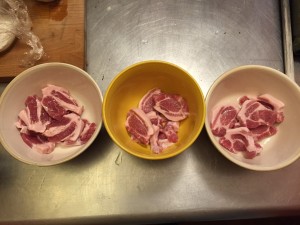 above left: our alkaline component, baked baking soda. Above right, pork ribs marinated in (from left to right) salt and baked baking soda, salt and egg whites, just salt.
above left: our alkaline component, baked baking soda. Above right, pork ribs marinated in (from left to right) salt and baked baking soda, salt and egg whites, just salt.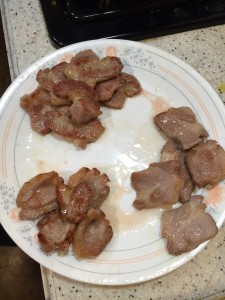 The ribs after being stir fried for the same amount of time (top: baked baking soda, bottom left: egg whites, bottom right: salt
The ribs after being stir fried for the same amount of time (top: baked baking soda, bottom left: egg whites, bottom right: salt
This experiment showed us pretty clearly that the pork brined with sodium carbonate (baked baking soda) browned much more efficiently than the batch with only salt. The egg white brine batch fell somewhere in between. Though the sodium carbonate batch had more roasted flavor and was more tender, it also had too much of the soapy taste and bitter taste of the soda. The egg white batch was the favorite. (Note, we did rinse all the marinades/brine off before stir frying). The takeaway from this was that egg whites make a nice component in a marinade baking soda is useful but should be used sparingly (especially baked baking soda which is actually a stronger alkali -see our Our Ramen and Alkalinity: A Scientific Explanation Post).
In Conclusion
Now we know more about the Maillard reaction, where it comes from, and how we can influence it. Remember that, while delicious, MRPs might not always be appropriate in your dish. Do you want the roasted and meaty flavors or would you prefer to keep the intrinsic flavors of the ingredients in the forefront? If you want the later, you can do the inverse of Lersch’s list, add water, lower the temp, lower the pH, and so forth. For an experiment we did on how the type of sugar used effects the Maillard reaction in dulce de leche, see our post on sugars.
Works Cited
Ajandouz, El Hassan, Véronique Desseaux, Sanaa Tazi, and Antoine Puigserver. 2008. “Effects of Temperature and pH on the Kinetics of Caramelisation, Protein Cross-Linking and Maillard Reactions in Aqueous Model Systems.” Food Chemistry 107 (3): 1244–52. doi:10.1016/j.foodchem.2007.09.062.
Bastos, Deborah Helena Markowicz, and Alejandro Gugliucci. 2015. “Contemporary and Controversial Aspects of the Maillard Reaction Products.” Current Opinion in Food Science, Food Chemistry and Biochemistry • Food Bioprocessing, 1 (February): 13–20. doi:10.1016/j.cofs.2014.08.001.
“Cooking with Alkali.” 2016. Nordic Food Lab. Accessed February 23. http://nordicfoodlab.org/blog/2015/8/6/cooking-with-alkali.
Culetu, Alina, Beatriz Fernandez-Gomez, Monica Ullate, Maria Dolores del Castillo, and Wilfried Andlauer. 2016. “Effect of Theanine and Polyphenols Enriched Fractions from Decaffeinated Tea Dust on the Formation of Maillard Reaction Products and Sensory Attributes of Breads.” Food Chemistry 197, Part A (April): 14–23. doi:10.1016/j.foodchem.2015.10.097.
Golon, Agnieszka, Christian Kropf, Inga Vockenroth, and Nikolai Kuhnert. 2014. “An Investigation of the Complexity of Maillard Reaction Product Profiles from the Thermal Reaction of Amino Acids with Sucrose Using High Resolution Mass Spectrometry.” Foods 3 (3): 461–75. doi:10.3390/foods3030461.
Helou, Cynthia, Philippe Jacolot, Céline Niquet-Léridon, Pascale Gadonna-Widehem, and Frédéric J. Tessier. “Maillard Reaction Products in Bread: A Novel Semi-quantitative Method for Evaluating Melanoidins in Bread.” Food Chemistry 190 (2016): 904-11. Web.
McGee, Harold. 2004. On Food and Cooking. 2nd ed. Scribner.
Patrignani, Mariela, Gustavo Juan Rinaldi, and Cecilia Elena Lupano. 2016. “In Vivo Effects of Maillard Reaction Products Derived from Biscuits.” Food Chemistry 196 (April): 204–10. doi:10.1016/j.foodchem.2015.09.038.
Purlis, Emmanuel. 2010. “Browning Development in Bakery Products – A Review.” Journal of Food Engineering 99 (3): 239–49. doi:10.1016/j.jfoodeng.2010.03.008.
Su, Guowan, Tiantian Zhao, Yaqi Zhao, Dongxiao Sun-Waterhouse, Chaoying Qiu, Ping Huang, and Mouming Zhao. 2016. “Effect of Anchovy (Coilia Mystus) Protein Hydrolysate and Its Maillard Reaction Product on Combating Memory-Impairment in Mice.” Food Research International 82 (April): 112–20. doi:10.1016/j.foodres.2016.01.022.
“Food Science and Nutrition and the Maillard Reaction – Melanoidins.” 2016. Accessed February 24. http://www2.warwick.ac.uk/fac/med/research/tsm/mvhealth/proteindamage/food_nutrition/melanoidins.

